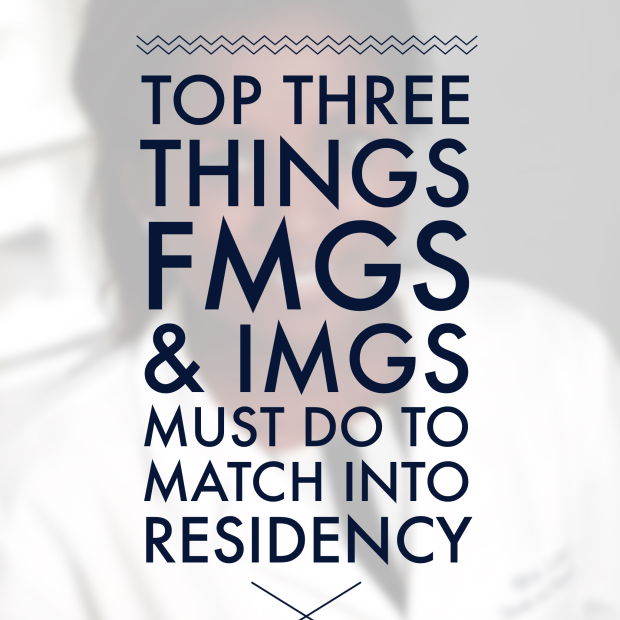 As both an international and foreign medical graduate I have gone through the mills of this process. Between switching visas and learning the ropes only by experience I can confidently tell you some of what you need to know to begin this journey.
As both an international and foreign medical graduate I have gone through the mills of this process. Between switching visas and learning the ropes only by experience I can confidently tell you some of what you need to know to begin this journey.
1. ACE the Boards.
This post may as well end here. Board Scores are VERY Important. When I applied into residency in 2011, USMLE step 1 scores greater than 240 were highly desirable. High step 1 (and step 2) scores represent you as a competitive, strong applicant who is less likely to become a burden in training and more likely to excel in your specialty of choice.
During my year as chief resident at a family medicine program in Kentucky I was easily drawn to portfolios with competitive scores. Your scores on step 1 have the power to make or break your application as an FMG. You need to prove how you are equally competitive especially with US graduates. Most students from US schools have the benefit of being able to use the reputation of their medical schools as leverage, this advantage is absent for FMGs unless you’re from a world renowned school. As chief, a high board score also translated into a higher probability of success on USMLE step 3 and eventually family medicine boards (which we take in April during the 3rd of year of residency training prior to graduation).
2. Apply strategy in your observer-ship (clinical rotation) process.
Yes, you should definitively shadow a practicing clinician but you have to be very strategic. Do shadow in more than one specialty but at least one of each category i.e. general adult medicine, medical subspecialties, general surgery, pediatrics and a surgical sub specialty. Certainly tailor this based on your desired field of future practice. You may need a few months of US clinical experience. In my opinion one observership for 30 days isn’t sufficient for anyone without US clinical experience. You need to use this time to expose yourself to the way medicine is practiced differently here in the US from where you were trained. It can serve as a step 2 CK board prep tool as well. Do look for clinical scenarios that tie into your board review prep to make your medical knowledge memorable.
The second aspect to being strategic is to use this as an opportunity to network! Yes, in medicine who you know matters! Begin by picking out residency programs in the state where you live by visiting the ACGME website (for MD/MBBS degree holders). Do check other less saturated states as well such as in the Midwest, Deep South and SouthWest. Do appropriate research on these programs -including how many FMGs/IMGs have been previously admitted to these programs, visa sponsorship (if necessary) and the requirements for residency application. Most programs require US clinical experience for varying time frames. Once all these criteria are met I suggest you pick up the phone and call them to request an observership. The best option if you can afford it is to drive up to the residency coordinator’s office and have a one on one inquiry session. The worse that will happen is that they don’t accommodate your request in which case you will try the next program on your list. I remember calling programs directly to inquire about scheduling a visit and then disclosing intentions to apply during such visits.
The most important part about strategizing is to request to do your observership (or rotation for carribean med students) with the program director (PD) or assistant PD. Essentially; ensure that your preceptor is directly involved with the program. You are trying to advertise yourself as a desirable, hard working future applicant. Remember that.
In one instance; during the time when I was torn between pediatrics and adult medicine (before I settled into Family Medicine) – I took the bus to a certain reputable children’s hospital in Chicago to request information on a pediatric clerkship with the residency program director! I got in. I was the only FMG during that entire month, my counter parts were students from Rush University and one other Chicago based medical school. At the end of my rotation the PD sat me down and was clear as to how impressed she was with my work ethic and drive and expressed desire to review my application if I applied. I believe if I chose to do pediatrics I would’ve trained there. Easily.
3. Start Early.
A common mistake I see among FMGs is procrastination. If you are a Carribean medical student – do not wait until the end of your 2nd year to start mapping out the above strategies. Start on day 1 of medical school. You know the programs in your community at home – so start there but don’t end there. If you’re outside of the US and planning a transition then start working on your boards long before you move. As soon as you’re settled then begin your networking process. You can never be too aggressive. You are a goal getter. That’s all. Again; the worse that could happen is you get rejected. I was rejected too, many of my successful, smart and brilliant co-residents (FMGs and non- FMGs alike) all have varying stories of rejection throughout medical training. What matters most is you cannot afford to give up. Trust God, trust your process and try again even after multiple failures and rejection.
Life is not about what happens to you but what you do with what happens to you.